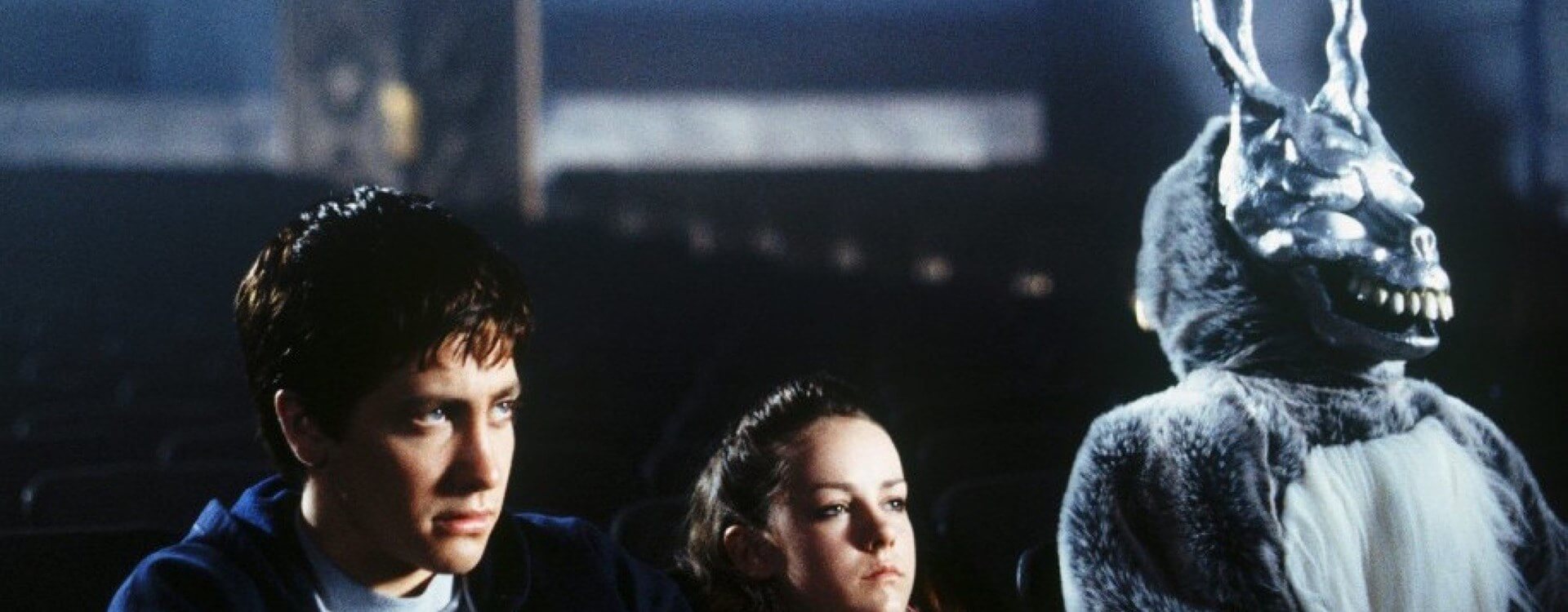Highlights
Table of Contents
Explore article topics
Another installment in our series that looks at some iconic films and what makes them so unique. This time we analyze Richard Kelly’s cult psychological thriller starring Jake Gyllenhaal, which celebrates its 20th anniversary this month.
First, a disclaimer. This post will not try to “solve the mystery” of Donnie Darko or offer an alternative theory to its ending. Instead, I’ll look at how the film’s music and visuals set the angsty mood of Richard Kelly’s film and make it more than just a film with a mysterious ending.
Directed by Richard Kelly, Donnie Darko had a very ominous beginning unrelated to its edgy and moody atmosphere and mind-bending storyline. Released less than 2 months after 9/11, the film sees a jet engine that crashed into a house in the middle of suburbia…not exactly what Americans wanted to see so soon after the tragedy. And true enough, the American audience mostly ignored the film. Only when it crossed the pond over to England did the film start generating a buzz and earning its cult status.
Music plays a huge role in Donnie Darko. And this is true for the background instrumental music and the songs, which often take over the scenes they accompany.
Get everything you need to create the perfect video
The songs
The soundtrack was composed and curated by composer and singer-songwriter Michael Andrews, who also scored Tammy (2014) and The Big Sick (2017). Since Donnie Darko is set in 1988, all the songs in the film are from the 1980s. The only exception is “Mad World,” which is a cover of an 80’s song by the new wave band Tears for Fears. To complete the dark and moody atmosphere of the film, the film’s soundtrack features mostly dark 80s new wave classics. The music’s power lies in that Richard Kelly uses songs in their entirety, so let’s look at some of them.
“The Killing Moon” by Echo & The Bunnymen
When the film came out, the music of the opening sequence was Echo & The Bunnymen’s epic post-punk classic, but in the Director’s Cut, Richard Kelly chose the more romantic “Never Tear Us Apart” by Australian New Wave band INXS, for which he didn’t have the rights to use at the time. He moved “The Killing Moon” to the party scene, replacing “Under the Milky Way” by another Australian new wave band, The Church.
For this post, I will not talk about the Director’s Cut. For one, my strongest impression from Donnie Darko was watching the original release, and I really think the song is a better fit than the Director’s Cut.
You can watch both versions and make up your own mind.
Original release:
The Director’s Cut
So as we see Donnie biking back home after waking up in the middle of a road, we get a glimpse of the Middlesex suburb. The song’s dark energy and romantic touches hint that darkness lies underneath the seemingly wholesome suburban setting. We also get a feeling that Donnie is somewhat of an outsider.
“Head Over Heels” by Tears for Fears
Another powerful scene is when we’re introduced to the school. It’s a sequence of tracking shots where the camera roams around the school, following all the significant Middlesex high school characters. We see Donnie and his buddies, the bully and his sidekick (played by Seth Rogen), Donnie’s soon-to-be love interest Gretchen (Jena Malone), the principal, the dancing girls, the teachers (Drew Barrymore, Noah Wyle) and many others. The epic song coupled with the camera movement really keeps you engaged and focused on the little details and facial expressions of each character.
And the song ends with the very fitting lines:
In my mind’s eye
One little boy, one little man
Funny how time flies
“Mad World” by Gary Jules and Michael Andrews
The final emotional sequence features a fitting emotional song – a stripped-down version of the original Tears for Fears classic. Here, the slowed-down version of the lyrics takes center stage with melancholic piano and strings instead of synths and electronic drums.
“All around me are familiar faces, worn out places, worn out faces,” sings Jules as we see all the characters deal with the tragedy that just occurred.
“And I find it kind of funny, I find it kind of sad, that the dreams in which I’m dying are the best I’ve ever had,” is an especially powerful line that resonates long after the film ends.
The Background Music
Michael Andrew crafted a beautifully haunting score of mainly piano and string pieces often engulfed by a drone sound. But there is also an emotional progression to the score. While always dark, the music becomes more emotionally intense as Donnie Darko’s mental state deteriorates. We start with mostly piano pieces like “Carpathian Ridge” and “Liquid Spear Waltz“, gradually culminating into more choral compositions like “Slipping Away“, “Waltz in the 4th Dimension” and “For Whom The Bell Tolls.”
When tension is resolved, we go back to melancholy with the piece “Did You Know Him” that flows into “Mad World”.
Share this article
Did you find this article useful?
Related Posts
- By Jonathan Mateer
- 7 MIN READ
Latest Posts
- 17 Apr
- By Daniela Bowker
- 7 MIN READ
